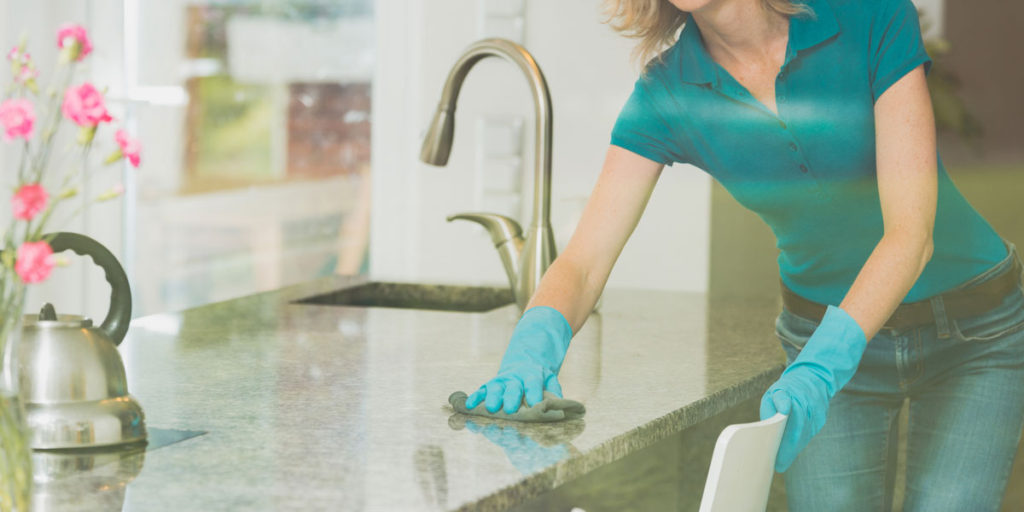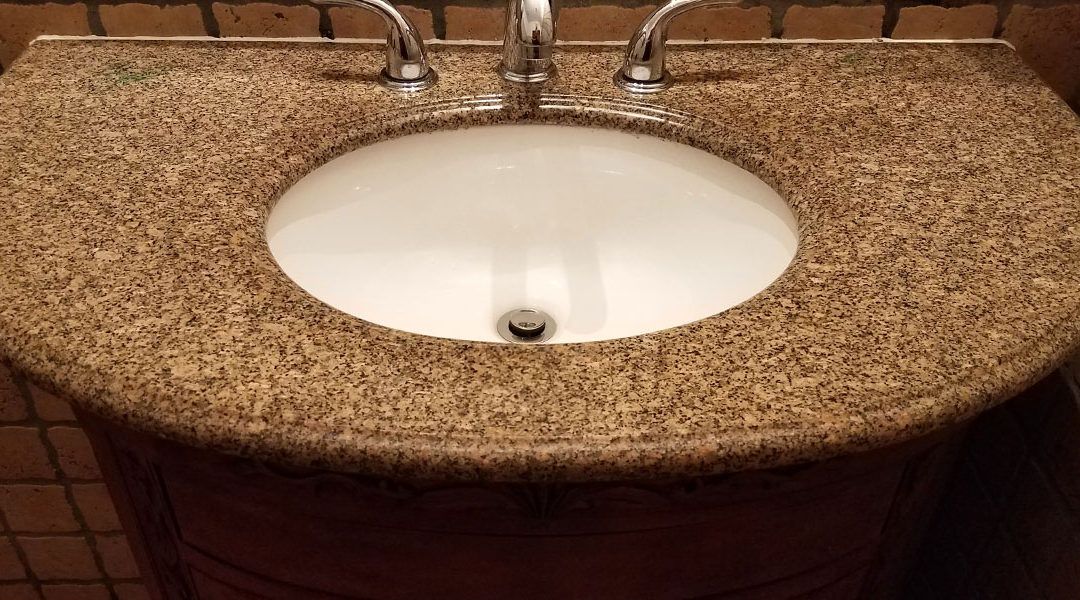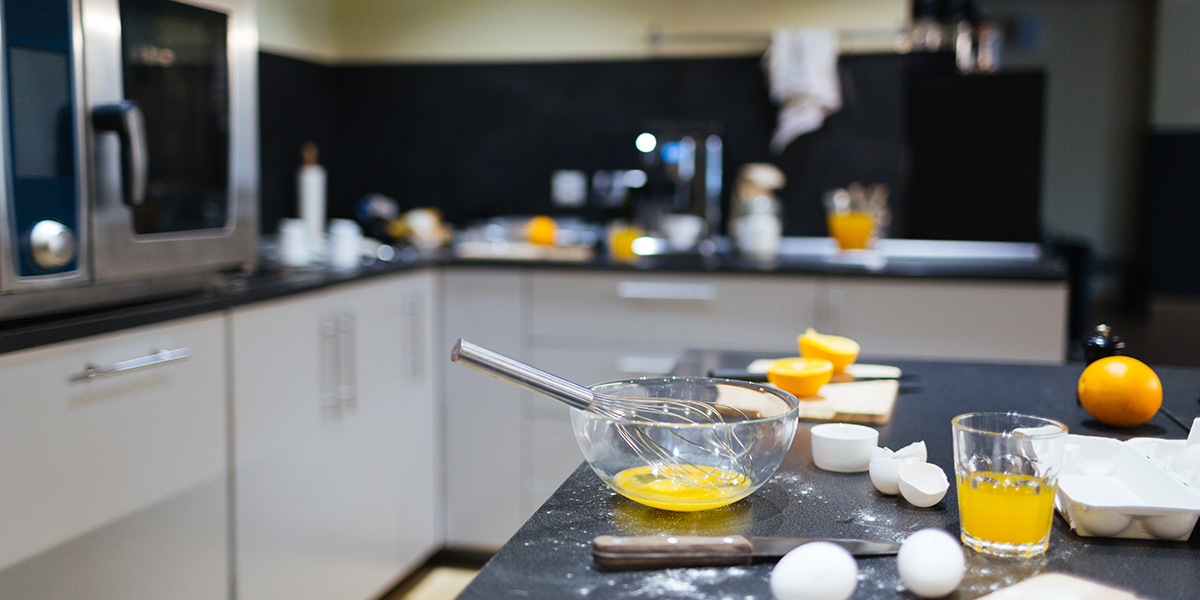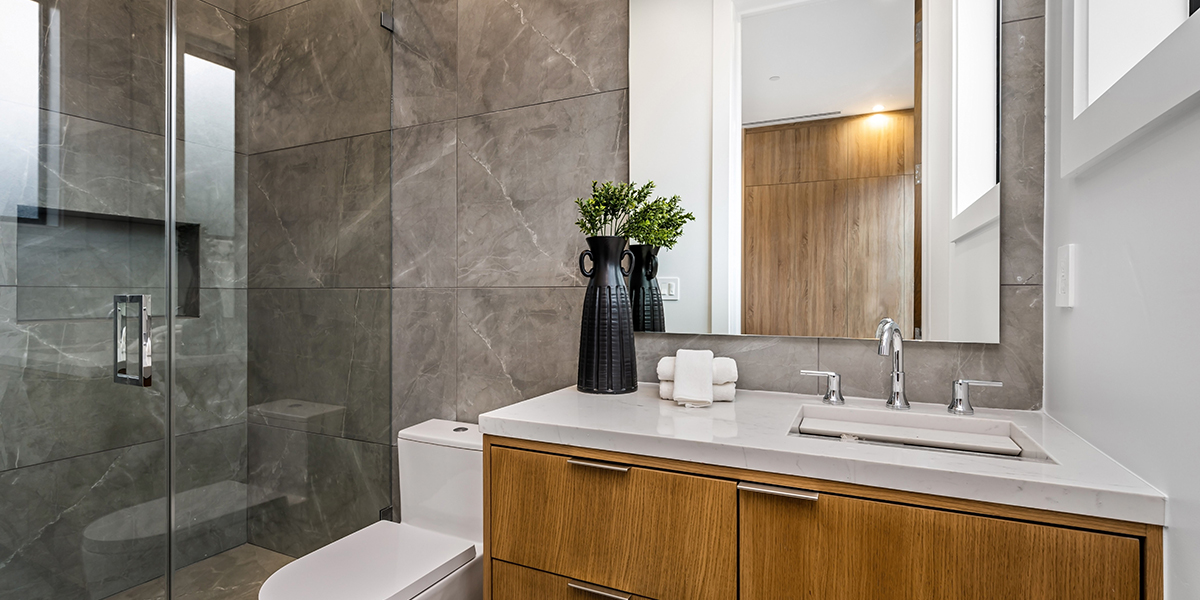Granite is one of the most popular natural stones for both interior and exterior installations. When we think about the qualities granite brings to your home, this really is no surprise. The stone’s heat and scratch-resistant properties is evidence of its durability and when the stone is properly sealed, its stain-resistant qualities make it suitable for any home. The stone does need to be cleaned, but, thankfully, this is not an overly laborious process. In fact, granite care can be easily summarized in three simple steps:
Download Our Natural Stone Care Guide — Click Here
1. Ensure that your stone is granite.
This may be a surprising one, but just because the salesman said the stone is granite, this does not verify the stone’s authenticity. For example, be wary of any black stone which is being touted as granite: there is no such thing. In the natural stone industry, it is not uncommon for any natural stone which is not “marble” to be called “granite.” Such examples include anorthosite (the black stone often confused for granite), diorite, andesite, gabbro, basalt, granulite, and others which are sometimes sold as “granite.”
Making sure the stone of interest is what you think it really needs to be the first step in cleaning it. This is because different stones have different qualities and react in sometimes surprising ways when exposed to chemicals.

2. Daily cleaning with a damp sponge.
Once you’ve confirmed that your stone is indeed granite, the next step is maintaining the stone with a simple daily routine. Cleaning granite isn’t a labor-intensive process by any means. On the contrary, since granite is naturally a non-stick stone, it can be cleaned with neutral cleaners, which also reduces the need to keep strong chemicals in your kitchen. A natural stone cleaner shouldn’t leave any residue behind the way a soap may–soap can also cause a greasy film or leave streaks on the stone’s surface. In general, the stone cleaner should only be needed once per week. The other six days a wet sponge should do the job.
Other things you can do on a daily basis to preserve your granite countertops is to use cutting boards, trivets, and cooling racks. You should also take the time to wipe off any water that gathers around your faucets, which can cause calcification.
3. Reseal on an annual basis at a minimum.
Granite has a porous quality about it, which means that it allows some liquids like oils, water, grease, and acids to cause staining, but with proper care, the stone will last a long time. Now, since granite is great for your bathrooms and kitchen, it will likely be exposed to a lot of liquid, which makes the need to reseal even more apparent.
Every cut of granite has some variance and natural stone sealers have different qualities. Because of this, you should check with your manufacturer or installer for instructions about how the stone should be sealed. It’s typically as simple as spraying on the product and wiping off the excess.
When it comes to your selection, installation, and maintenance of your next granite or other natural stone installation, the ZStone team is ready to help you every step of the way.





